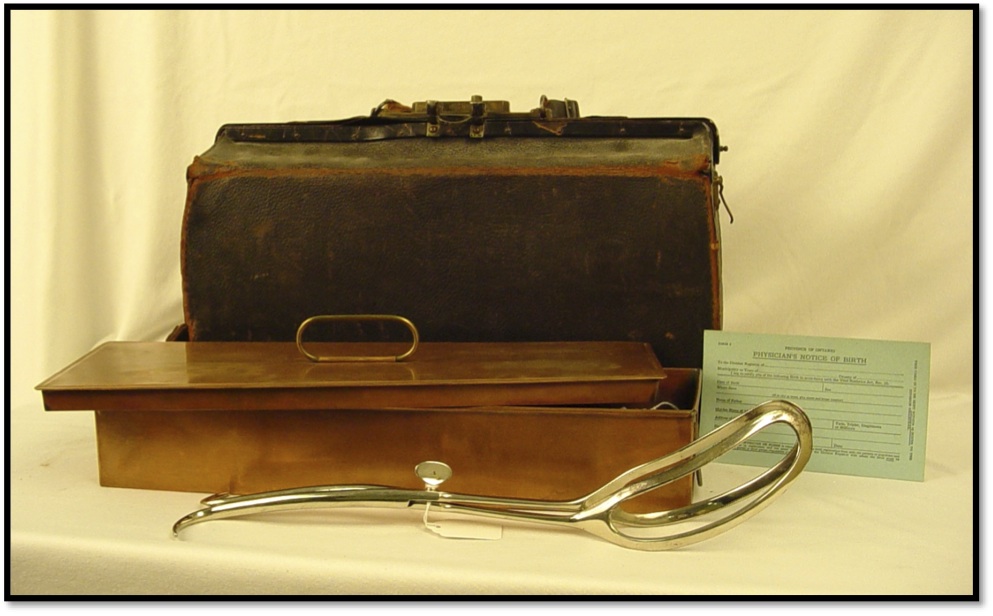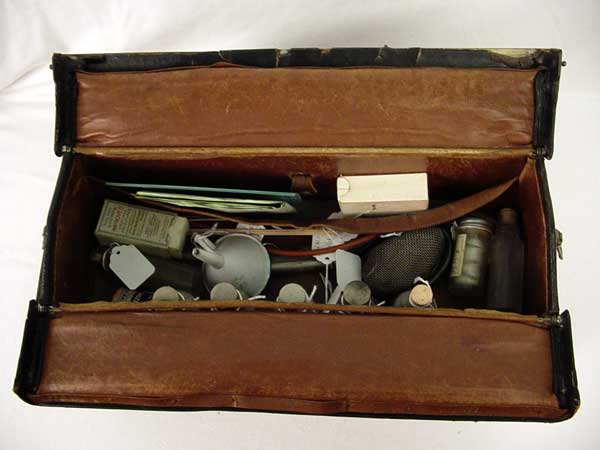For the link to the online database click here.
The Obstetric Bag: What’s Inside?
This doctor’s bag contains 89 different objects deemed necessary for attending a birth.This object dates from the early to mid 20th C.
• Applicators (6)
• Bottle (7)
• Birth Certificate Form (3)
• Canula (4)
• Catheter (2)
• Container and Lid
• Forceps (10)
• Forcep Clamp
• Forcep Part (2)
• Forcep Handle
• Funnel
• Gauze Bandage
• Hook
• Irrigator Tip
• Midwifery Forceps (3)
• Needle Holder
• Notice of Birth Form (6)
• Sponge (2)
• Sutures (15)
• Suture Box (3)
• Suture Container
• Syringe Container and Lid
• Tenaculum Forceps(2)
• Trocar (4)
• Umbilical Tape and Jar
• Yankaeur's Anesthesia Mask & Parts
You are using a browser that is not standards-compliant. The information on this Web site will be accessible to you, but for a list of Web browsers that comply with the World Wide Web Consortium standards, please visit our Web standards page.



